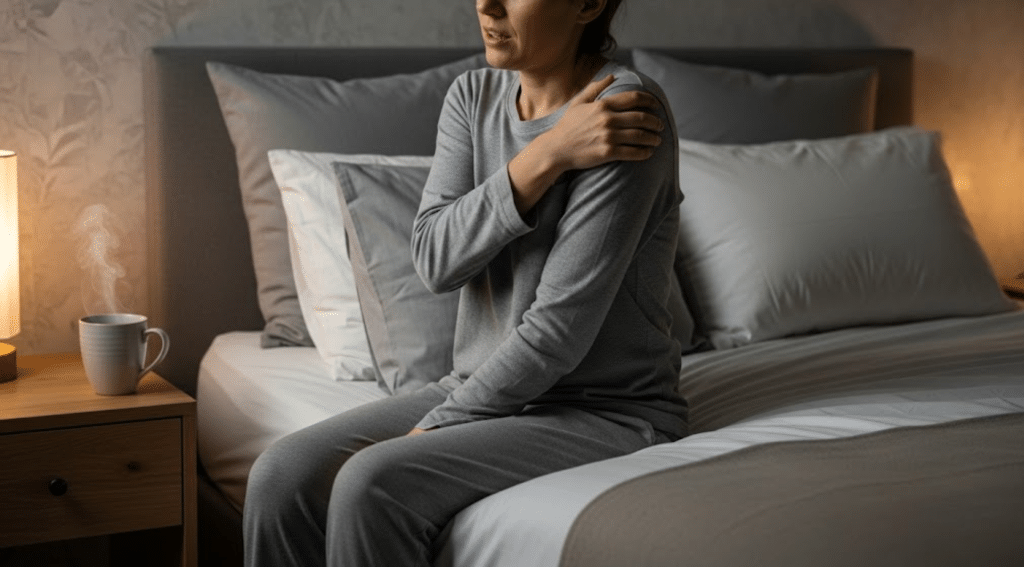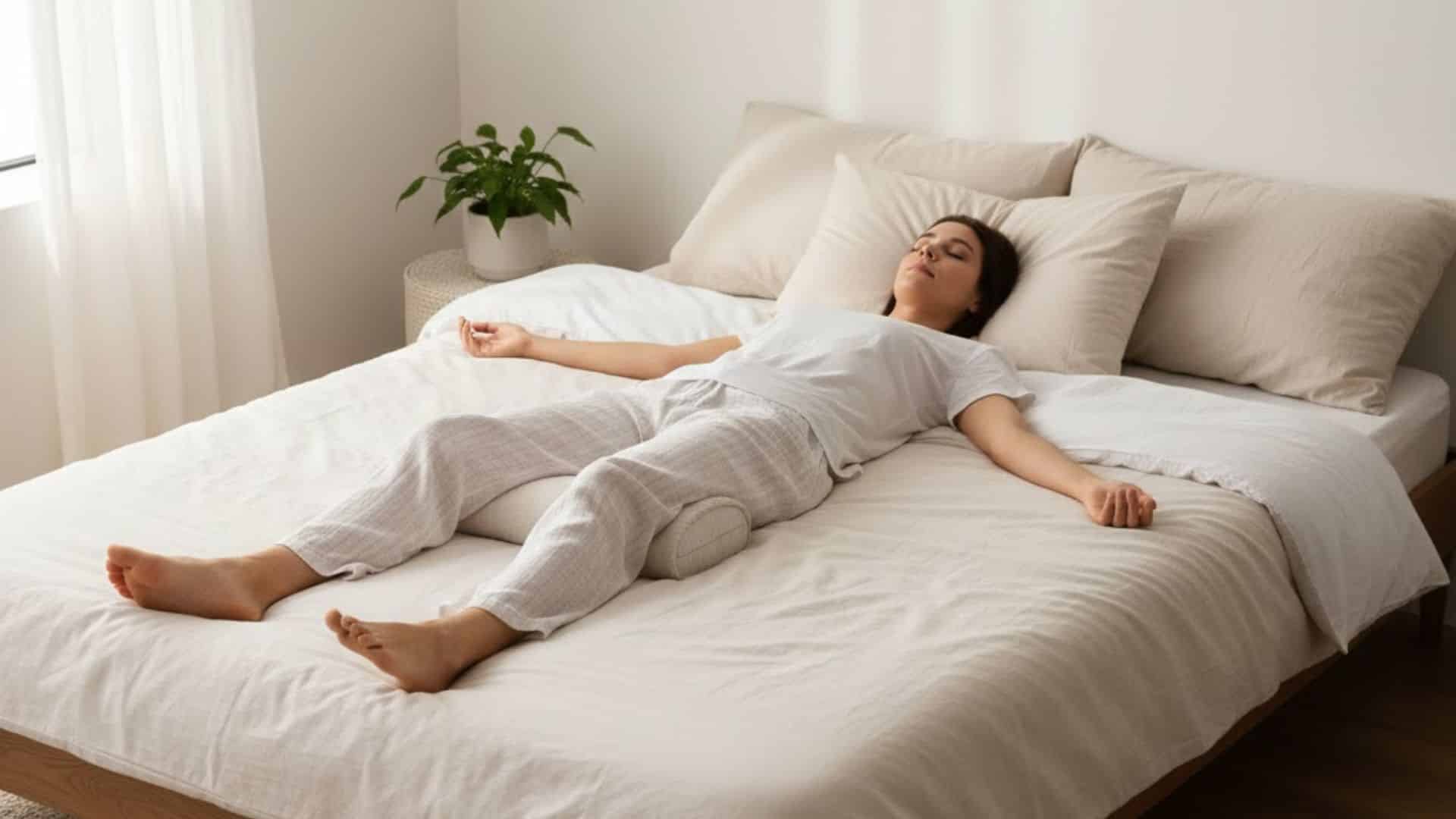Waking up with a sore shoulder can turn what should’ve been a restful night into a rough morning. I’ve had that happen, and it’s frustrating, especially when side sleeping feels like the most natural position.
The truth is, the wrong setup or posture can put too much pressure on your shoulder joints and muscles.
I know a few simple ways on how to sleep on your side without hurting your shoulder, and they can make a big difference.
I’ll walk you through why side sleeping can cause pain, how to adjust your position for relief, and which pillows and mattresses give the best support. Let’s make side sleeping more comfortable.
Why Side Sleeping Can Cause Shoulder Pain
When you sleep on your side, your shoulder supports much of your upper body weight. Over time, this pressure can cause shoulder pain while sleeping on the side, as it strains the joints, muscles, and soft tissues, often leading to discomfort or stiffness in the morning.
Common triggers include:
- Poor spinal and shoulder alignment during sleep
- A mattress that’s too firm or too soft, leading to uneven pressure
- Sleeping with your arm tucked under your body or head
While mild shoulder pain sleeping on the side can come from position or pressure, ongoing or worsening pain may point to an underlying issue, such as arthritis, rotator cuff injury, or nerve compression.
If pain doesn’t improve with simple changes, it’s a good idea to get it checked by a doctor.
How to Sleep on Your Side Without Hurting Your Shoulder
Sleeping on your side can feel natural, but side sleeper shoulder pain can make it hard to get through the night. The key is to support your body in the right spots.
When your head, neck, back, and arms are lined up, your shoulder gets less pressure and more relief. Try these simple positions to see which one feels best for you:
1. Side Sleeping with a Pillow Hug

Lie on your pain-free side and hug a thick pillow to your chest. This keeps your top arm from pulling your shoulder forward and helps align your spine.
The pillow also gives comfort and keeps pressure off the sore shoulder. Keep your knees slightly bent for extra support.
2. Side Sleeping with a Pillow Between Your Knees
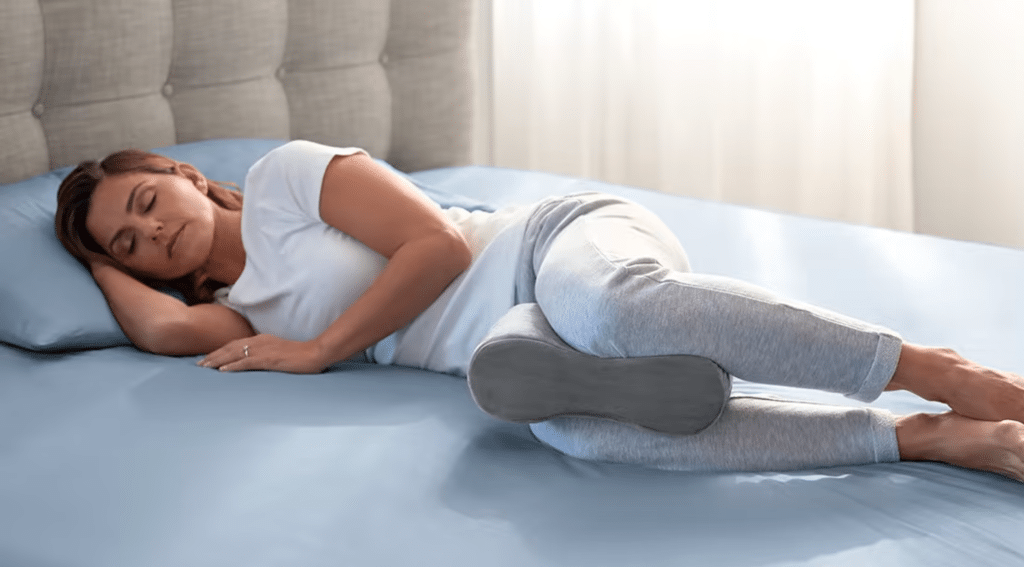
Lay on your good side and place a firm pillow between your knees. This keeps your hips in line and helps your spine stay straight. It also reduces twisting in your lower back and shoulders.
Make sure your head pillow fills the space between your ear and shoulder.
3. Back Sleeping with Arms at Sides
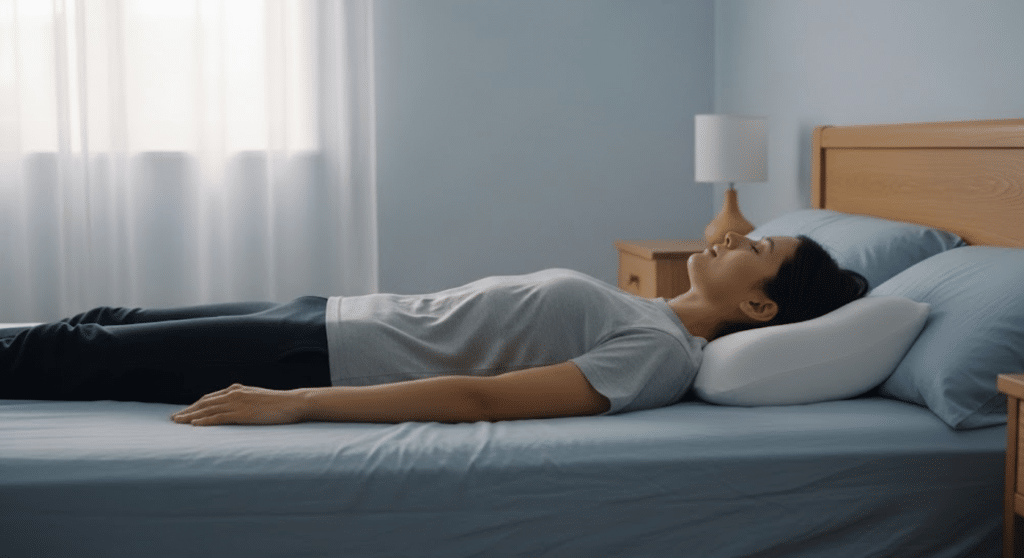
Sleeping on your back takes all the weight off your shoulders. Keep your arms by your sides and use a supportive pillow under your head. This helps your neck and shoulders relax.
You can also place a small rolled towel under your shoulder blades for extra comfort.
4. Back Sleeping with a Small Pillow Under Each Arm
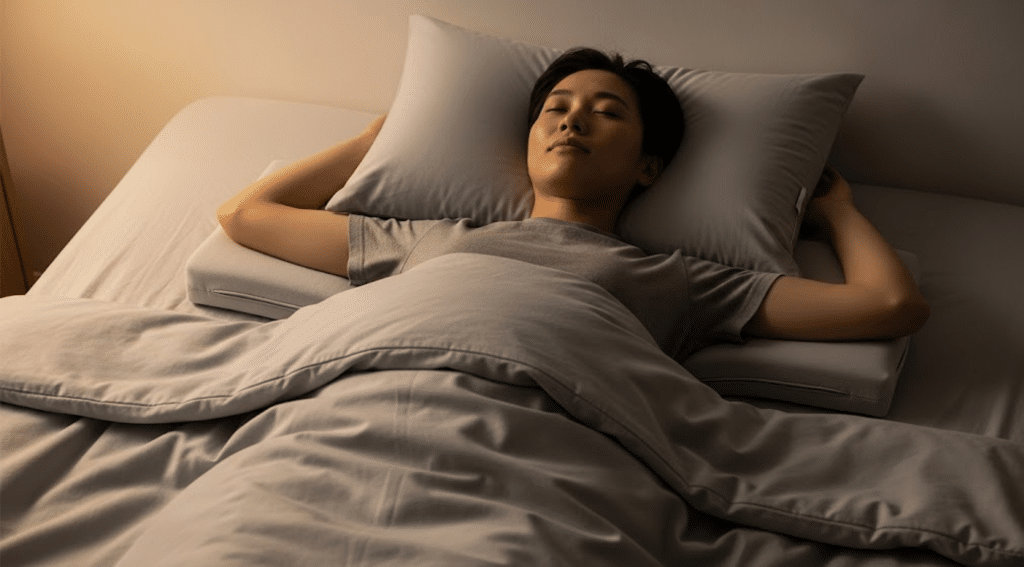
This position gives your shoulders extra support. Lie flat on your back and place a small pillow or rolled towel under each arm.
This raises them slightly and keeps your shoulder joints relaxed. It’s helpful if you tend to shift a lot in your sleep.
5. Reclined Sleeping in a Chair or Adjustable Bed
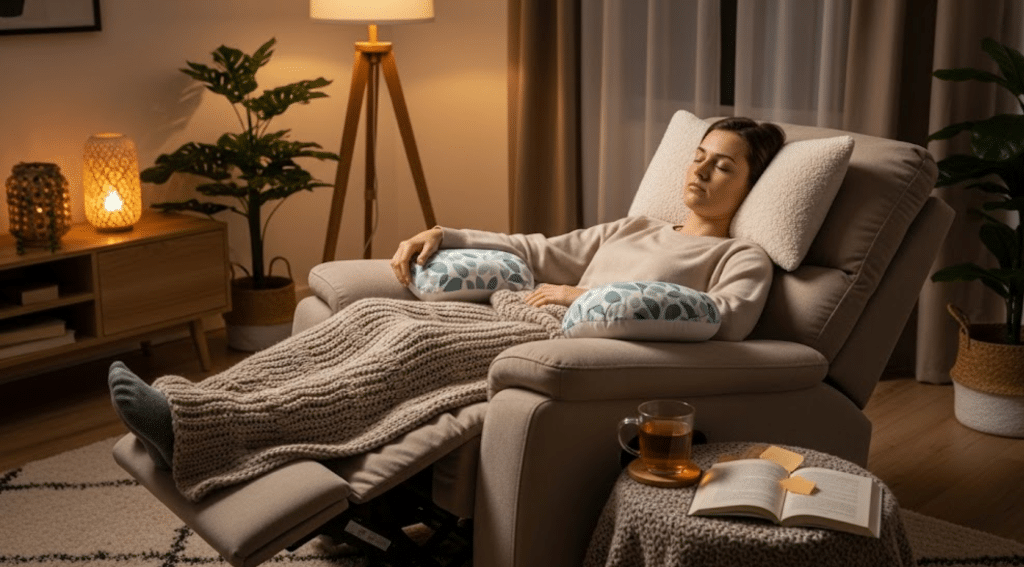
If lying flat hurts, sleeping in a reclined position can ease pressure. Use a recliner or adjust your bed to lift your head and upper body.
This angle reduces strain on the shoulders and helps with pain. Keep a pillow behind your neck and one under each arm for support.
Optimize Your Sleeping Setup
A good sleeping setup can make a big difference in reducing pain and helping you wake up refreshed. Start with a mattress that supports your body without creating pressure points. Medium to medium-firm often works well for most side sleepers.
Pair it with a pillow that keeps your head and neck in line with your spine. Add extra pillows where needed to support your shoulders, hips, or lower back.
Keep your sleep environment cool, dark, and quiet to help your muscles relax fully. Avoid sleeping in one position all night; gentle shifts can ease stiffness.
By combining proper support with a calming environment, you can improve comfort, protect your joints, and enjoy better-quality sleep night after night.
How to Use Pillows to Reduce Side Sleeper Shoulder Pain
Using pillows the right way can take pressure off your shoulders and keep your body in better alignment while you sleep. This helps reduce strain and makes it easier to wake up without pain.
- Place a pillow between your knees to keep your hips and spine aligned.
- Hug a body pillow to support your upper arm and shoulder.
- Use a thinner pillow under your head so your neck stays level with your spine.
- Add a small pillow or folded towel under your armpit for extra shoulder cushioning.
- Try a wedge pillow behind your back to prevent rolling onto your sore shoulder.
- Place a small pillow under your waist to keep your spine straight.
- Use a supportive, pressure-relieving pillow material like memory foam or latex.
Making these small pillow adjustments can give your shoulder the relief it needs and help you get a more comfortable, pain-free night’s sleep.
When to Seek Professional Help
Shoulder pain from side sleeping usually improves with small changes, but sometimes it’s a sign of something more serious. Seek medical attention if your pain is sharp, lasts more than a week, limits your movement, or comes with numbness, tingling, or swelling.
A physical therapist can help by checking your posture, showing you stretches, and guiding you through exercises to strengthen and protect your shoulder. They can also teach you better sleep positions to avoid pressure on the joint.
If the pain doesn’t improve, your doctor might suggest imaging tests such as an X-ray, ultrasound, or MRI. These can help find issues like rotator cuff injuries, arthritis, or nerve problems, so you can get the right treatment.
Bedtime Habits to Help Your Muscles Relax
A few small changes to your nighttime routine can make a big difference in how your muscles feel.
These habits can help you release tension, ease soreness, and prepare your body for a better night’s sleep:
- Light Stretching Before Bed: Do gentle stretches for your neck, shoulders, back, and legs. This helps release tension that builds up during the day.
- Warm Shower or Bath: Warm water relaxes tight muscles and improves blood flow, making your body feel looser and more comfortable.
- Heat Pad or Warm Towel: Place a heat pad or a warm, damp towel on sore areas for 10–15 minutes before bed.
- Gentle Breathing Exercises: Slow, deep breaths help your muscles and mind relax together. Breathe in through your nose, hold for a second, then breathe out slowly through your mouth.
- Comfortable Sleep Position: Choose a position that supports your spine and reduces pressure on sore muscles. Use pillows for support where needed.
- Avoid Caffeine and Heavy Meals Late: These can make your body feel restless and interfere with muscle recovery.
- Calm Bedroom Atmosphere: Dim the lights, keep the room cool, and reduce noise. Your muscles relax more easily in a peaceful setting.
Building these habits into your nightly routine can help your muscles recover and keep you more comfortable while you sleep. Over time, your body will start to relax faster, making it easier to fall asleep and stay asleep.
Conclusion
In the end, figuring out how to sleep on your side without hurting your shoulder has made a big difference for me, and I know it can for you, too.
I’ve talked about pillow placement, mattress choice, and simple adjustments that take the pressure off your shoulder so you can rest more easily.
Now, I want you to think about your own bed – could a few small changes help you wake up with less pain? For me, even one tweak made mornings feel better.
Remember, better sleep at night means a better day ahead. If this helped you, check out other blogs for more easy, practical tips you can start using tonight to sleep comfortably and wake up refreshed!


